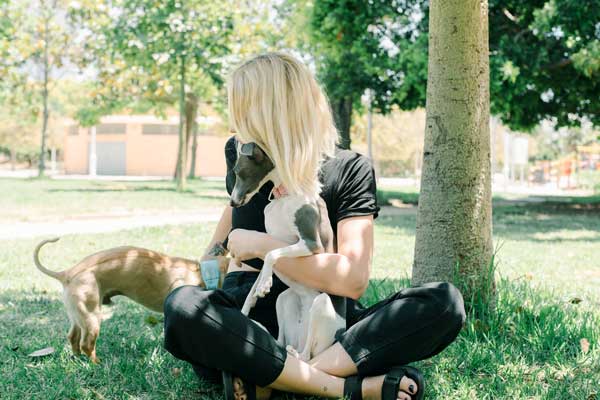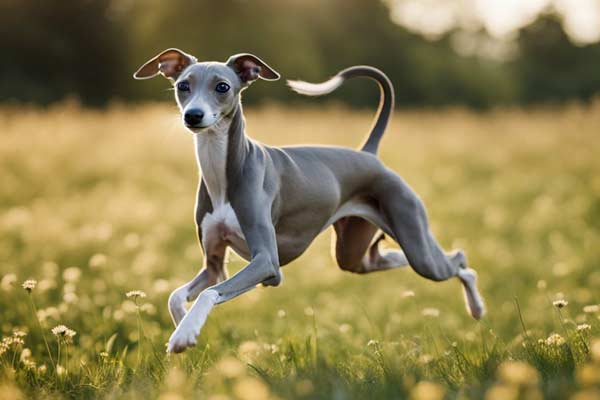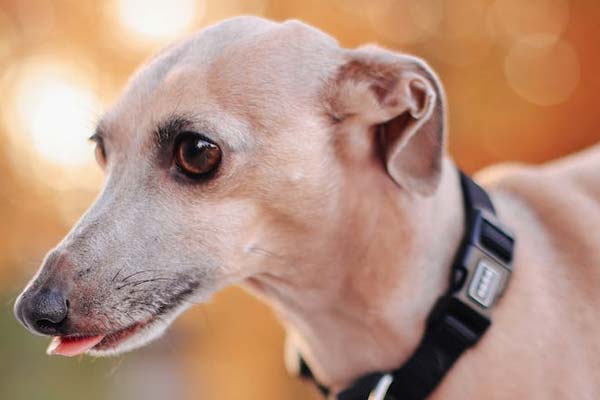Are Italian Greyhounds Lazy? Discover the Truth About Their Energy Levels!
Italian Greyhounds are graceful and elegant little dogs that make perfect lap buddies. Some people think they’re lazy, but that’s not true! Let’s learn the real story about their energy levels, personalities, and what affects their pep.
Even though Italian Greyhounds love to snuggle on the couch, they’re not lazy. They’re active and sporty dogs that need exercise every day to stay happy and healthy. They might look delicate, but they’re solid and quick.
If you’re considering getting an Italian Greyhound, it’s good to know about their energy and personality so you can take great care of them.
Things like age, health, and where they live can change how energetic they are. By looking at these factors, we can genuinely understand Italian Greyhounds and show they’re not lazy!
Are Italian Greyhounds Lazy or Misunderstood?
Italian Greyhounds are often stereotyped as lazy dogs that prefer to lounge around all day. However, this stereotype may be misleading and does not accurately represent the breed’s true nature. While it is true that Italian Greyhounds enjoy relaxing, they are also known for their energy bursts and playful personalities.
One reason for the stereotype of Italian Greyhounds as lazy dogs is their small size. People often assume that small dogs are not as active as larger breeds.
However, Italian Greyhounds are sighthounds bred for hunting and have a high prey drive. These dogs are famous for being fast and agile; that takes a lot of energy!
Another reason for the stereotype is that Italian Greyhounds are sensitive to cold weather and prefer to stay indoors. Sometimes, people might think these dogs are lazy. But actually, they just want to keep warm and cozy.
Individual personalities also play a role in whether or not an Italian Greyhound is perceived as lazy. Some dogs may be more laid-back and prefer to relax, while others may have a more active and playful nature.
Don’t forget; every dog is one-of-a-kind! So, check out their character and what they do to get to know them.
While Italian Greyhounds may enjoy lounging around, they are not necessarily lazy dogs. Their energy bursts and playful personalities suggest that they may be misunderstood.
Evaluating each dog based on its personality and behavior is essential rather than relying on stereotypes.
Exercise Needs of Italian Greyhounds
Italian Greyhounds do not require excessive amounts of exercise. The recommended exercise requirements for the breed include daily walks, playtime, and mental stimulation. Regular physical activity is essential for their overall health and well-being.
A fit and healthy Italian Greyhound needs a minimum of one walk each day, lasting an hour. If possible, two walks a day is even better.
Walking is not just about expending physical energy; it satisfies the canine instinct to travel when hunting for food and provides essential psychological stimulation for your dog.
For walks, a handy tip is to give puppies 5 minutes of exercise for each month of their age (up to 2 times a day) until they’re all grown up.
For example, a two-month-old puppy requires a 10-minute walk, while a four-month-old puppy needs a 20-minute walk.
Playtime is another fun way to keep your Italian Greyhound happy and in tip-top shape. However, remember that Italian Greyhounds have delicate bones, so avoiding activities involving jumping or excessive running is essential.
Mental stimulation is also crucial for Italian Greyhounds. They are intelligent dogs that require mental challenges to stay engaged and happy.
Give your Italian Greyhound fun puzzle toys, play interactive games, and enjoy training sessions together. This keeps their minds busy and stops them from getting bored.
Italian Greyhounds’ Indoors vs. Outdoors Behavior
Italian Greyhounds can be pretty adaptable to different living situations, but their behavior can vary depending on whether they are indoors or outdoors. Italian Greyhounds may appear more relaxed and calm, but they can be active and playful when allowed to run and play outdoors.
Italian Greyhounds are generally content to lounge around on comfortable furniture or soft blankets when kept indoors. They are not typically known for being destructive or overly active indoors, and they can make great apartment dogs for this reason. However, they still require regular exercise and mental stimulation to stay happy and healthy.
When outside, Italian Greyhounds show a fun side of themselves. They’re speedy, good at moving around, and just love running and playing in big open spaces.
They can be playful and energetic and often enjoy chasing after toys or playing games with their owners.
Keep in mind that Italian Greyhounds possess a powerful prey drive. As a result, it’s essential to keep them on a leash or within a safely enclosed space while they’re outside.
They can be prone to chasing after small animals and may not always be responsive to commands when pursuing something they consider prey.
Overall, Italian Greyhounds are adaptable and can thrive in various living situations. However, their behavior can vary depending on whether they are indoors or outdoors.
When kept indoors, they tend to be more relaxed and calm, while they can be active and playful when allowed to run and play outdoors.
How to Keep an Italian Greyhound Active and Engaged
Italian Greyhounds are known for their sweet and affectionate personalities, but they also have a lot of energy. Keeping them active and engaged is essential to prevent boredom and destructive behavior.
Below are a few helpful recommendations for maintaining an active lifestyle for Italian Greyhounds:
- Interactive Toys: Choose safe, age-appropriate puzzles and treat-dispensing toys for mental and physical stimulation.
- Dog Sports: Engage in activities like lure coursing, agility, and obedience for exercise and bonding.
- Playdates: Schedule regular socialization with other dogs for exercise and interaction.
- Walks: Ensure daily walks with a comfortable, well-fitted leash and harness.
- Mental Stimulation: Provide training sessions, scent work, and other activities to challenge their minds and strengthen their bond.
Consult your veterinarian for your dog’s specific exercise needs.
Influences of Nutrition on Italian Greyhounds’ Energy Levels
Italian Greyhounds are known for their high energy levels and playful nature. However, their energy levels can be influenced by their diet. A well-balanced diet is essential to maintain their energy levels and overall health.
Italian Greyhounds have a high metabolism and require a diet rich in protein and carbohydrates. It’s advised that their diet consists of a large amount of animal-derived protein, like chicken or fish, alongside complex carbohydrates, including brown rice or sweet potatoes.
It is important to avoid feeding Italian Greyhounds processed dog food loaded with additives, synthetics, and chemicals. These types of food can upset the balance of the microbiome by fueling harmful bacteria, leading to digestive disorders and decreased energy levels.
Additionally, Italian Greyhounds are prone to allergies, and certain foods can trigger an allergic reaction, decreasing energy levels. It is crucial to monitor their diet and identify foods that may cause an allergic response.
Maintaining the elevated energy levels of Italian Greyhounds requires a properly balanced diet. Owners should provide a diet rich in animal-based protein and complex carbohydrates while avoiding processed dog food and identifying potential allergens.
Age and Health Factors Affecting Activity
Italian Greyhounds are known for their high energy levels and playful nature. However, age and health conditions can significantly affect their activity levels. As Italian Greyhounds age, they tend to become less active and may require less exercise.
In addition to age, specific health issues can also impact an Italian Greyhound’s energy levels. For instance, dental problems like gum disease and tooth decay can cause discomfort and pain, decreasing activity levels. Regular dental checkups and cleanings can help maintain oral health and prevent such issues.
Italian Greyhounds may also experience eye issues like cataracts, glaucoma, and progressive retinal atrophy (PRA), potentially resulting in blindness. These conditions can lead to discomfort and pain, impacting their overall activity levels.
Another health issue that can impact an Italian Greyhound’s activity level is leg fractures. Due to their long and skinny legs, Italian Greyhounds are more prone to fractures. Leg fractures can cause pain and discomfort, leading to decreased activity levels.
Age and health conditions can significantly impact an Italian Greyhound’s activity levels. Closely monitoring their health and offering proper care is crucial for preserving their energy levels and overall well-being.
Understanding Italian Greyhounds’ Temperament and Personality
Italian Greyhounds are fun, loving, and intelligent pets that like being with people. They are gentle, friendly lapdogs that can get sad if left alone too long and might do naughty things.
They can be scared by loud sounds or fast movements and might be shy around new people, but they get better when they spend more time with them.
These small dogs don’t need much exercise but should go for short walks or play in the yard daily to stay happy and healthy. Overall, Italian Greyhounds are sweet, kind pets that are great to have around.
Common Misconceptions about Italian Greyhounds
Italian Greyhounds are a unique breed with a lot of personality. However, many misconceptions about them need to be addressed. Here are some common misconceptions about Italian Greyhounds:
- Italian Greyhounds are lazy: This is a common misconception about Italian Greyhounds. While they love to cuddle up on the couch, they are also active dogs requiring regular exercise. Italian Greyhounds are known for their speed and agility and love running and playing.
- Italian Greyhounds are challenging to train: Another common misconception about Italian Greyhounds is that they are difficult to train. However, this is not true. Italian Greyhounds are intelligent dogs that are eager to please their owners. They can be trained to do anything with patience and positive reinforcement.
- Italian Greyhounds are fragile: While small dogs, they are not as fragile as many believe. They are pretty sturdy and can handle a fair amount of roughhousing. However, it is crucial to supervise them when playing with children or other dogs to prevent accidents.
- Italian Greyhounds are not good with children: This is another misconception about Italian Greyhounds. While they may be small, they are great with children and make wonderful family pets. However, as with any dog, it is crucial to supervise them around children to ensure that everyone stays safe.
In conclusion, Italian Greyhounds are a wonderful breed that is often misunderstood. We can help people better understand and appreciate these fantastic dogs by addressing these common misconceptions.
Real-life Examples and Testimonials
Italian Greyhound owners offer personal insights into their pets’ activity levels and temperaments. Here are some examples:
- One owner’s Italian Greyhound is active, enjoys running and playing, and likes lounging on the couch. Daily exercise and mental stimulation prevent boredom and destructive behavior.
- Another owner’s dog is more laid-back, preferring cuddles and short walks over long walks or runs, but still requires regular exercise for health.
- A third owner has an active Italian Greyhound that needs ample exercise to burn energy, loves running and playing fetch, and enjoys agility training. Insufficient exercise and attention can lead to anxiety and destructive behavior.
Italian Greyhounds have varying activity levels and temperaments, depending on the dog and upbringing. Providing enough exercise and mental stimulation is essential for their well-being.
Conclusion
In conclusion, Italian Greyhounds aren’t lazy dogs but have both relaxed and energetic sides. It’s crucial to understand their unique traits and needs for their well-being.
These dogs have a fragile bone structure, need careful handling and exercise, and may face health issues like leg breaks and dental problems. Regular checkups and preventative care are essential.
Italian Greyhounds are sensitive and affectionate, thriving on human companionship. They can become bored or anxious if alone for long periods, so mental stimulation and socialization are vital.
Ultimately, Italian Greyhounds can be excellent pets for the right owner, offering happiness and companionship with proper care and attention.






